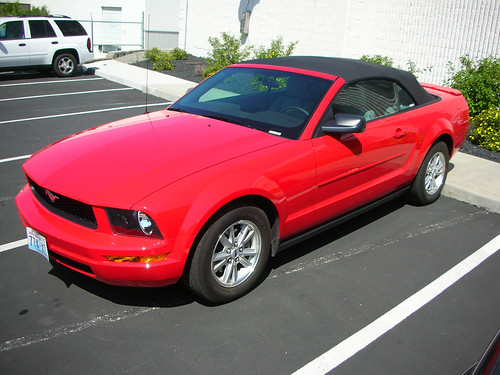- Joined
- Oct 5, 2009
- Messages
- 10,621
- Reaction score
- 2,104
- Location
- In your dreams...
- Gender
- Undisclosed
- Political Leaning
- Independent
much of it is imposed by government
wat?......
much of it is imposed by government
Yes
Car and Driver took a bunch of car to Virgina International Raceway, the Mustang Gt 2011 beat the Nissan 370Z and quite a few other cars (Camaro SS) around the track by a few seconds. It also cost 3-5 grand less new then a comparably equiped 370Z
The falcon had radically different lines and a wider wheel base. Similar power plant. The Falcon stayed more 'boxy.' I ownd both the 66 mustang and later the 66 Falcon...loved em both. I would think the closer comparison for the Mustang was the Merc Cougar.

took a while to find it mason; thought you might appreciate the design aspect:
For practical everyday cars, the best were made in the mid to late 1970's.
They got excellent fuel economy and were built to last. Many could ram a solid object, like a tree or wall at 5 mph and suffer NO damage. Today's cars will crush like a paper cup.
They were also a lot simpler and easier and cheaper to repair and maintain. Today's cars have too much crap on them, like air bags, electric locks, computers that die on the middle of the highway, etc; much of it is imposed by government.
Mid (actually, starting at catalytic converters 72 in CA 73 elsewhere) to late 70s were the dark ages of American cars. Witness the Mustang II.
It wasn't until the 80s stang and camaro returned to 200HP range did light shine again.
Mid (actually, starting at catalytic converters 72 in CA 73 elsewhere) to late 70s were the dark ages of American cars. Witness the Mustang II.
It wasn't until the 80s stang and camaro returned to 200HP range did light shine again.
Although Dodge was exposed, I still love the Stealth.
The Stealth was a Mitsubishi.
Omg what car is that? I want it.
no quibble with you this farI will give you an example of what happened to cars entering the '70s
We are all familiar with the Cadillac 500 CID engine.
In 1970 it had 375 horsepower.
By 1975 that had dropped to 190 while using the same amount or more gasoline to get the car moving.
here is where we part companyThat is the government at work.
you got me thereAmerican cars that were not supposed to sip gas (corvettes and other high-end vehicles, for people with gas cash) - were crap.
How does the gas problem explain that.
Catalytic converters (needed as they were) demolished American engineering. This is obvious, as any make of sport vehicle pre and post-cata is staggeringly disappointing.
no quibble with you this far
here is where we part company
after the yon kippur war of '73 opec imposed an oil embargo
not only did the price of a barrel of oil increase four fold but the availability was spotty
there was one week when 1/5 of all service stations had no gasoline
nixon asked that gas not be sold on weekends ... and the gas lines were huge during the weekday (even numbered tags only on the even days of the calendar)
meanwhile detroit executives kept insisting Americans would not buy a small car
at the same time congress rationed the number of imports which could be sold by the japanese auto makers. hell, subaru put seats in the bed of its trucks so they would be eligible for entry as "cars" since truck imports were severely limited
sales prices for the gas sipping japanese cars began at sticker, and the bidding went up from there
this lasted until the early 80's (when the japanese began making cars in the USA - voila - no import restrictions)
the point is, detroit ignored that there was a genuine domestic demand for small, efficient (and reliable) cars
the government facilitated the American auto industry's slow conversion to efficient vehicles by pricing the desired foreign imports out of the reach of many ... forcing them to then buy shoddy, unreliable, poor handling - but comparably cheaper - USA makes
We agreed there was no 75 vette. Never happened.
Why do you say that? It was 1983 that there was no Corvette.
Nevermind the HP stats in 73-74, they were 'played with' until 75 (when the impact on performance could no longer be so blatently denied and HP calculations went back to 72 standards), check the 0-60s. Catalytics hit in 73 (72 in CA vehicles). There was nothing decent until the 85 Mustang (4 barrel) and then 86 vette and camaro (injection).
1973 - 1984, The Dark Age of American Performance Cars
I totally agree.

